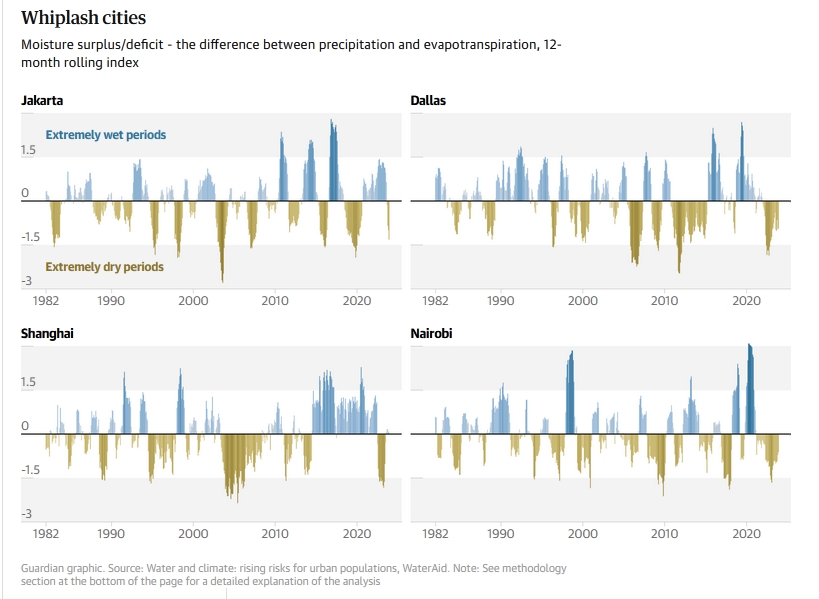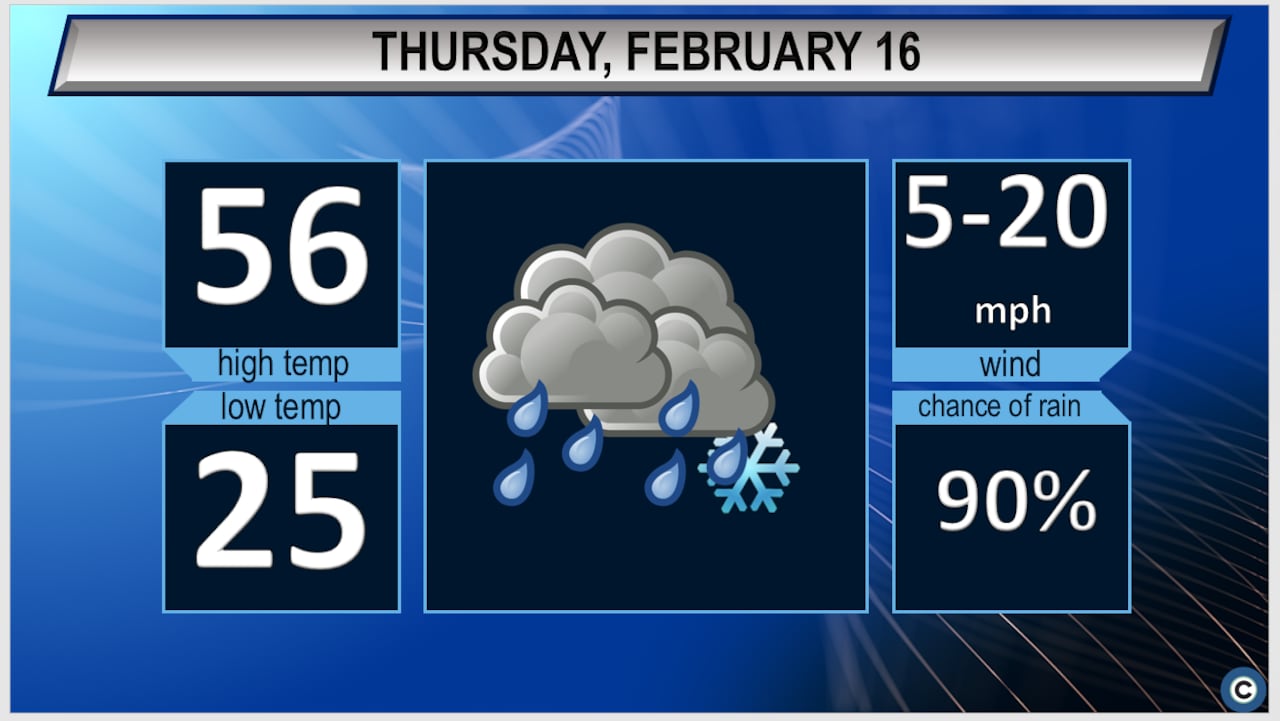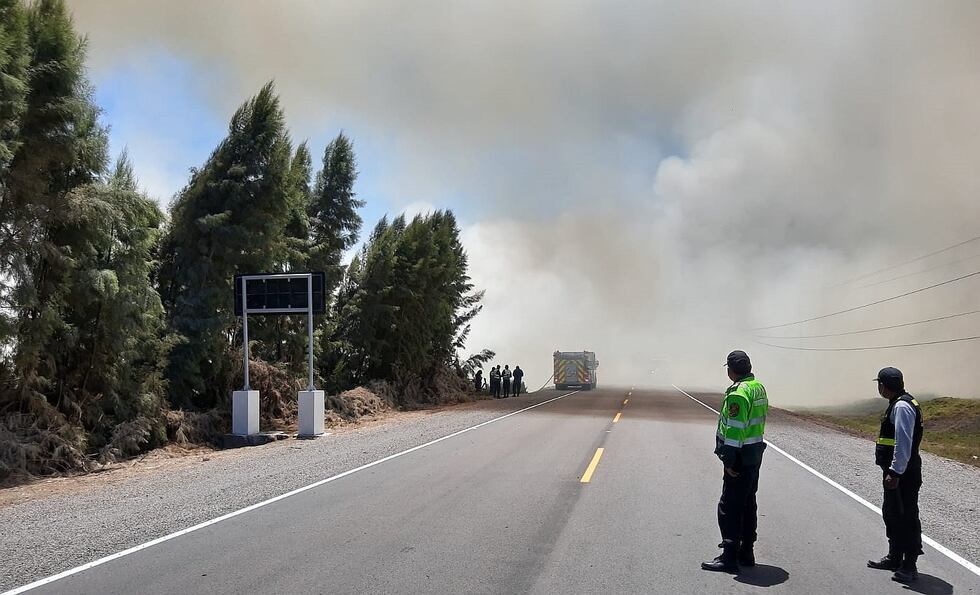Climate Whiplash: How Cities Worldwide Are Experiencing Dangerous Impacts

Table of Contents
Increased Frequency of Extreme Weather Events
Climate change is the primary driver behind the escalating frequency and intensity of extreme weather events in urban centers. The rising global temperature fuels a cascade of devastating impacts, from prolonged heatwaves and intense droughts to catastrophic floods and powerful storms. These aren't isolated incidents; they're becoming the new normal, intensifying the challenges faced by cities worldwide.
Consider these examples: London's repeated struggles with flash flooding, devastating wildfires consuming vast swathes of California, and the record-breaking heatwaves that have scorched European cities in recent years. These events showcase the global reach of climate whiplash and its immediate impact on urban life.
- Heatwaves: Result in increased mortality rates, especially among vulnerable populations; strain power grids leading to blackouts; and increase the risk of wildfires.
- Floods: Cause extensive property damage, displace residents, disrupt transportation networks, and contaminate water supplies.
- Droughts: Lead to water scarcity, impacting agriculture and increasing the risk of wildfires and food insecurity.
- Wildfires: Result in poor air quality, property destruction, displacement of residents, and long-term health problems.
- Storms: Cause damage to infrastructure, power outages, flooding, and significant economic losses.
The World Meteorological Organization reports a concerning upward trend in these events, highlighting the urgent need for action to mitigate climate change and adapt to its impacts.
Strain on Urban Infrastructure and Services
Climate whiplash significantly strains urban infrastructure and essential services, pushing them beyond their operational limits. Outdated infrastructure, designed for less extreme conditions, often struggles to cope with the sudden and intense onslaught of these weather events.
- Aging infrastructure: Many cities have aging water, sewage, and power grids, making them particularly vulnerable to climate whiplash. Overwhelmed drainage systems contribute to flooding, while aging power grids struggle to cope with extreme heat.
- Overburdened emergency services: Simultaneous crises caused by climate whiplash place immense pressure on emergency services, including fire departments, police, and ambulance services. Resource allocation becomes a critical issue during these events.
- Disruptions to water and sanitation systems: Flooding can contaminate water supplies, leading to waterborne diseases and health risks. Damage to sanitation systems can exacerbate the problem, leading to public health emergencies.
- Transportation networks disrupted: Flooding, landslides, and extreme temperatures can severely disrupt transportation networks, impacting commuting, emergency response, and supply chains.
For example, during Hurricane Sandy, New York City's subway system was severely flooded, causing significant disruption for weeks. This illustrates the vulnerability of even the most developed cities to the impacts of extreme weather.
Impacts on Public Health and Well-being
Climate whiplash poses a significant threat to public health and well-being, both directly and indirectly. The consequences range from immediate health crises to long-term mental health challenges. Vulnerable populations, including the elderly, children, and low-income communities, are disproportionately affected.
- Increased mortality and morbidity: Heatwaves and floods directly cause deaths and injuries. The subsequent spread of infectious diseases further contributes to increased morbidity rates.
- Spread of infectious diseases: Flooding and poor sanitation create ideal breeding grounds for waterborne diseases, impacting vulnerable populations most severely.
- Mental health impacts: Displacement, trauma, and the uncertainty associated with climate whiplash significantly impact mental health, leading to increased rates of anxiety, depression, and PTSD.
- Exacerbation of existing health inequalities: Climate whiplash exacerbates existing health inequalities, disproportionately affecting communities already struggling with limited access to healthcare and resources.
Adapting to Climate Whiplash: Mitigation and Resilience Strategies
Cities worldwide are increasingly recognizing the urgency of adapting to climate whiplash and implementing mitigation strategies to reduce its severity. This requires a multifaceted approach encompassing infrastructure improvements, early warning systems, and community-based resilience initiatives.
- Investing in resilient infrastructure: This includes building flood defenses, using heat-resistant materials in construction, and upgrading aging infrastructure to withstand extreme weather events.
- Improving urban green spaces: Increasing green spaces helps reduce the urban heat island effect, mitigating the impact of heatwaves and improving air quality.
- Developing early warning systems: Effective early warning systems allow cities to prepare for and respond to extreme weather events, reducing their impact.
- Promoting community preparedness and resilience initiatives: Community engagement and education programs are crucial to building community resilience and promoting preparedness for climate whiplash.
International cooperation and policy changes are also essential to effectively address climate change and build more resilient cities globally. Agreements like the Paris Agreement provide a framework for global action, but local initiatives and policy changes are critical for implementing effective solutions.
Understanding and Addressing Climate Whiplash
Climate whiplash is a clear and present danger to cities around the world. Its impacts on infrastructure, public health, and well-being are undeniable and demand immediate action. The increasing frequency and intensity of extreme weather events underscore the urgency of addressing climate change and building more resilient urban environments. We must adopt proactive measures, implementing both mitigation strategies to reduce greenhouse gas emissions and adaptation strategies to build resilience to the impacts of climate whiplash. Learn more about how your city is addressing climate whiplash and how you can contribute to building a more resilient future. Take action to mitigate climate whiplash in your community – your involvement matters!

Featured Posts
-
 Welcome In A Study Of Its Use And Customer Response In Retail Environments
May 31, 2025
Welcome In A Study Of Its Use And Customer Response In Retail Environments
May 31, 2025 -
 Opening Day 2025 Detroit Tigers Matchup Against Chicago White Sox Confirmed
May 31, 2025
Opening Day 2025 Detroit Tigers Matchup Against Chicago White Sox Confirmed
May 31, 2025 -
 Thursdays Northeast Ohio Weather Expect Rain
May 31, 2025
Thursdays Northeast Ohio Weather Expect Rain
May 31, 2025 -
 Almanac Daily Press Stay Informed With Up To Date News Sports And Job Listings
May 31, 2025
Almanac Daily Press Stay Informed With Up To Date News Sports And Job Listings
May 31, 2025 -
 Constanza Grave Incendio Forestal Causa Densa Humarada Y Afecta A La Poblacion
May 31, 2025
Constanza Grave Incendio Forestal Causa Densa Humarada Y Afecta A La Poblacion
May 31, 2025
